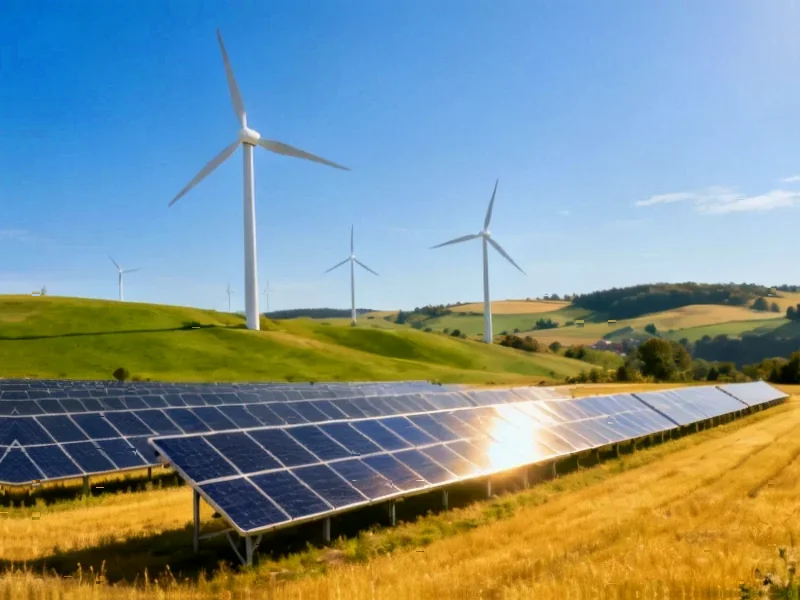According to The Economist, China burned a record 4.9 billion tonnes of coal in 2024, representing more than half of global coal consumption and equivalent to 1,500 Great Pyramids of Giza. The country generated nearly one-third of the world’s electricity, with electrical energy growing by 4,273 terawatt-hours over the past decade—more than 90% of America’s 2024 total electricity generation. Despite rapid renewable expansion, China is off-track to meet its 2030 carbon intensity target of 65% below 2005 levels, with solar curtailment rates rising from 3% to 5.7% and wind curtailment increasing from 3.9% to 6.6% in 2024. The analysis highlights that while China added more grid batteries than America and Europe combined and plans to triple its ultra-high-voltage power lines by 2050, the fundamental challenge lies in market design and grid optimization currently favoring coal. This creates a critical bottleneck in global decarbonization efforts that requires deeper examination.
The Infrastructure Versus Market Reform Dilemma
China’s renewable energy paradox represents a classic case of hardware outpacing software. While the country demonstrates extraordinary capability in building physical infrastructure—from ultra-high-voltage transmission lines to massive battery storage systems—the market mechanisms needed to optimize this infrastructure remain underdeveloped. This imbalance creates a situation where technological capacity exceeds institutional capacity, leading to the wasteful curtailment of clean energy even as coal plants continue operating. The fundamental issue isn’t China’s ability to manufacture and deploy renewable technology, but rather its political economy’s resistance to market-based electricity pricing that would naturally prioritize cheaper renewable sources over coal generation.
The Political Economy of Provincial Energy Independence
A critical factor often overlooked in China’s energy transition is the decentralized nature of energy decision-making. Provincial officials have strong incentives to build local coal capacity rather than rely on imported renewable power from distant regions. This creates a structural barrier to optimization that technical solutions alone cannot overcome. The fact that only one-fifth of electricity crosses provincial boundaries reveals how deeply embedded local protectionism is in China’s energy system. This dynamic mirrors historical patterns in other federated systems but operates with particular intensity in China’s unique political context, where provincial leaders are evaluated on economic growth metrics that favor local generation over grid efficiency.
Renewable Manufacturing Boom Meets Domestic Deployment Challenges
China’s position as the world’s dominant manufacturer of solar panels, wind turbines, and batteries creates an ironic tension. While the country produces the technologies needed for global decarbonization, its domestic deployment faces unique constraints. The International Energy Agency projections cited in the analysis don’t fully capture how China’s manufacturing dominance affects global supply chains. As Chinese renewable manufacturers continue scaling production, the pressure to absorb this capacity domestically increases, potentially leading to suboptimal deployment patterns. This creates a feedback loop where manufacturing capacity drives deployment strategy rather than optimal grid integration guiding manufacturing development.
The Underappreciated Role of Baseload Alternatives
While much attention focuses on solar and wind, China’s nuclear and hydropower expansion represents a crucial element in its decarbonization strategy. With roughly half of the world’s nuclear plants under construction located in China and massive hydropower projects in development, these technologies provide dispatchable clean energy that bypasses some grid integration challenges. However, they come with their own limitations—nuclear faces public acceptance issues globally, while hydropower is constrained by geography and increasing climate variability. China’s ability to rapidly scale these technologies gives it a unique advantage in managing grid stability during the renewable transition, but also creates dependency on large-scale centralized generation that may conflict with distributed energy trends elsewhere.
The Untapped Power of Carbon Pricing
China’s emissions trading scheme, launched in 2021, represents what could become the world’s most significant carbon market. However, as the analysis notes, the current system lacks a binding cap and distributes most credits for free, rendering it largely ineffective. The potential transformation if China implements a genuine cap-and-trade system cannot be overstated. A functioning carbon market would create economic signals powerful enough to overcome provincial protectionism and outdated grid contracts. The experience of the European Union Emissions Trading System demonstrates how carbon pricing can drive fuel switching, but China’s implementation faces unique political economy challenges that European models didn’t encounter.
What China’s Energy Transition Means for Worldwide Climate Goals
The stakes extend far beyond China’s borders. The country’s success or failure in navigating this transition will determine whether global climate targets remain achievable. China’s current path suggests it may successfully peak emissions earlier than pledged but struggle with the deeper decarbonization needed for net-zero goals. This creates a scenario where global climate progress could stall after initial gains, as other developing economies look to China’s model. The international community has limited leverage but could focus technical cooperation on market design and grid management, areas where European and American experience could complement Chinese technological prowess without triggering sovereignty concerns.
The Critical Decade Ahead
Between now and 2030, when China aims to have a reformed national electricity market operational, the country faces what may be the most challenging phase of its energy transition. The coming years will determine whether renewable capacity additions translate into actual coal displacement or simply supplement continued fossil fuel use. The global net-zero transition depends significantly on China navigating this period successfully. While the technological pieces are largely in place, the institutional and market reforms represent the true frontier—and the area where international observation and limited cooperation could yield disproportionate benefits for global climate efforts.




